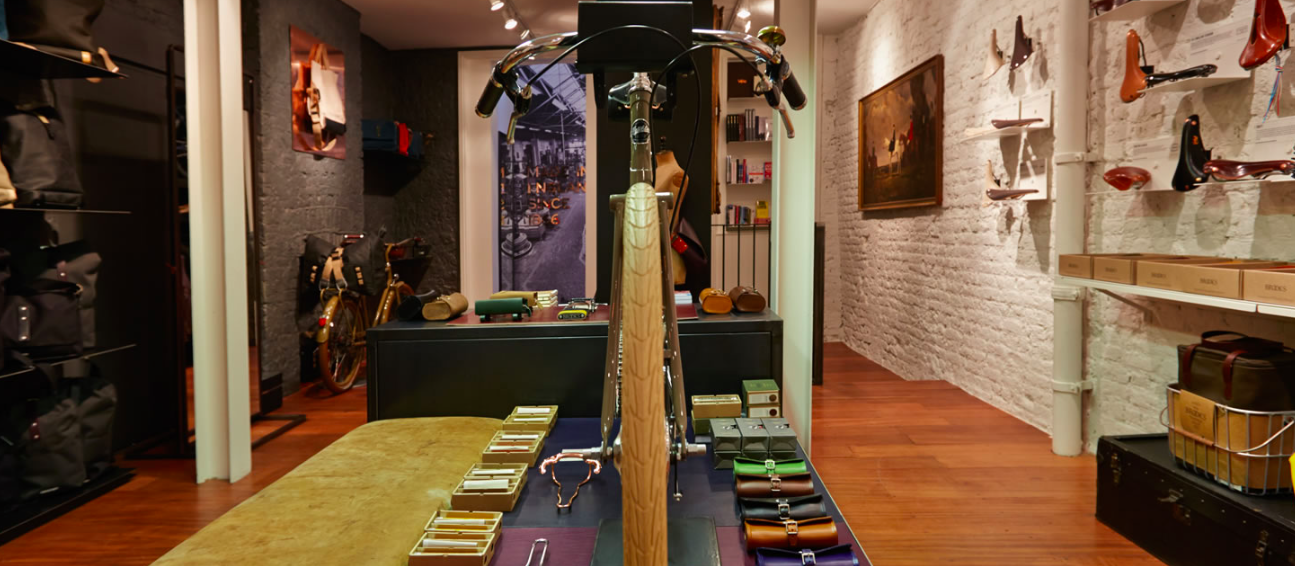The survival of Brooks is something I’m pleased to see and yet shouldn’t take for granted. When I say Brooks, I refer to the makers of traditional leather saddles as the mainstay of the business.

Modern day Brooks B1866
Starting in Victorian times, Brooks have been making saddles and majored in on the traditional leather saddle for bicycles. You can see a help timeline history here. The manufacturing process has remained largely unchanged over the years and they’ve had a loyal following. For the most part the traditional Brooks’ cyclist has been the cycle tourist using a steel frame, often with Carradice saddlebags, mudguards and no absolutely lycra clothing.
One of the nice things about Brooks’ saddles is they can, quite literally, last a life time. As the traditional buyer would perhaps only have one bicycle, or at the most two, the chances of having repeat sales are limited. This is all very nice but it does not lend itself to a good business model i.e. selling something that never wears out. The saddles are reputed to be hard and uncomfortable when they’re new before being broken-in, rather like a new pair of leather shoes. The last one I bought seemed to shape itself for me quite quickly, I just don’t remember it being uncomfortable and it seemed to get better and better as the leather moulded itself to my backside.
In some ways I am typical but only to a point. I have two Brooks B17 saddles myself (I think the B17 is the bog standard, normal saddle, nothing too fancy) and the older one dates from the 1980s and I have blogged about it once or twice before. The more recent one is almost identical and from the 21st century. Both of these are set to last a very long time and apart from the odd tin of Proofhide there is no reason for me to buy anything from Brooks.
So Brooks might not a good business proposition really. According to the timeline Brooks have been sold off from the original founding family. Subsequent to that they have been passed around Raleigh, Sturmey Archer and most recently Selle Royal. Yes Selle Royal are also a saddle maker and their range included some mediocre plastic saddles. Interestingly Brooks produced a plastic version in the 1980s. Ugh, big mistake chaps. I cannot recall these at all and just as well really; the whole notion of a PLASTIC Brooks saddle just doesn’t seem right.
Another problem for Brooks has been the weight. The saddles are relatively heavy, especially compared to some modern day offerings which weigh next to nothing. This is a big hindrance in the world of the modern day road bike where most cyclists are preoccupied with the bicycle’s weight. And then there’s the image. A beautifully crafted carbon fibre frame with Dura Ace D12 kit just doesn’t blend with a Victorian based leather saddle, does it? No. No way.
So how have they succeeded?
It could be argued that with a business such as Brooks, the moment you modernise production, that is the death knell for the business. The craft of making a Brooks leather saddle is wonderful. It depends on real skill in using leather and fixing it onto some kind of undercarriage with very visible rivets. They cannot be mass produced by a machine without the human ingredient.
And yet this is the 21st Century with an entirely different culture, clientele and approach to retailing. So how do you survive? It could it have been realistic for Brooks to remain standing still, just selling saddles to people who would keep them going for decades? Could they ever become trendy and a desirable components for all kinds of bikes? Could they commonly be used as original equipment by the likes of Trek, Giant or Cannonale? Hardly. So how have they succeeded?
The answer appears to have come from three things:
- Firstly is to widen the range to include other cycle accessories (handlebar grips, pannier bags and the like)
- Secondly the concept of B1866 which is basically a retail outlet aligned to creating a following using the modern fangled internet thing. This helps create an “image” and this is where it becomes rather subjective. I think three’s even one in Oslo.
- Create a contemporary image which is attractive to many.
With the latter I think Brooks were wise not to aim at the sportive market, I doubt if it would work. Instead it appears to focus on the current urban cyclist wanting a certain style. You’ll have seen those well groomed young men sporting quite bushy beards and a certain style of clothes. Yes, those.
Mind you, I wonder if I have this right. I have still not answered a question I posed to myself. Exactly who would spend hundreds of pounds on a Brooks Swallow? I wondered this in May 2014 and speculated it could include a weird selection of people, including those with a kinky interest in leather. Here’s the post in question. Please give me your views!




 RSS – Posts
RSS – Posts